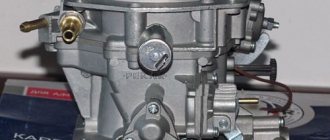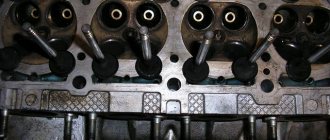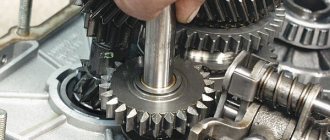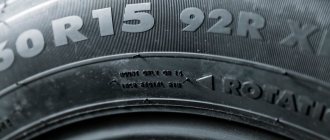A significant part of our country's vehicle fleet is represented by cars with carburetors. And although the carburetor has a lot of disadvantages, there are also advantages: it is maintainable and unpretentious to fuel.
It is these qualities that make it possible to improve the carburetor and adjust it to increase the elasticity of the engine while maintaining its efficiency.
Important: before you start tuning the carburetor, make sure that the engine and fuel system of the car are in good condition. There should be no problems with compression, fuel pump and oil filter. You can start tuning the Solex carburetor only after these problems have been eliminated. It is necessary to carry out a full inspection and adjustment of the main systems and mechanisms of the engine, check the serviceability of high-voltage wires, ignition coils, operability of air filters, drive traction, spark plugs. After this, the carburetor needs to be thoroughly washed and the strainer cleaned. Then it is advisable to measure fuel consumption during a test drive of about 100 km - such a distance will give the most accurate measurement. Even better - 100 km there and back, maintaining the same driving mode, so that the result is not affected by weather conditions and road terrain.
Cleaning and care
Car owners often encounter Solex carburetors becoming clogged, which requires constant cleaning as the jets become clogged. Dust mixes with oil and turns into deposits on the carburetor. Gradually, the layer of this plaque thickens, particles fall off from it, falling into the float chamber, resulting in clogged nozzles.
Obviously, constantly cleaning the carburetor is not good for it, since you have to disassemble it every now and then. The most appropriate solution may be to change the height of balancing holes that are too low. One way to raise them higher is to insert tubes to prevent dirt from getting into the holes. You can experiment with gel pen refills - their diameter (5 mm) is well suited for these purposes. The tubes must be secured well; alternatively, they can be heated with a soldering iron. Instead of a pen rod, you can use a fragment of a suitable diameter from a conventional antenna.
small modification of the Solex VAZ 21083 - Community "VAZ: Repair and Improvement" on DRIVE2
Today I decided to modify my Solex carburetor a little. and so what was done: 1 - replaced the fuel jets: 1st chamber fuel jet instead of 95, now costs 107 air 1652nd chamber fuel jet instead of 95, now costs 110 air 1252 - the elephant was bent into the 1st chamber, but not just like that, it was bent and configured in such a way that at the slightest opening of the damper the streams were strictly in this gap and in different directions, as if immediately into the manifold, towards the 1.2 and 3.4 cylinders, thus Even the slightest dips disappear when you sharply press the gas, the car behaves completely differently, the main thing is that these streams do not fall anywhere on the walls, on the damper, and do not meet each other, but at the slightest opening of the damper, they hit clearly in different directions! this is the whole trick! 3 - the screws on the dampers were also ground off to reduce the flow resistance and avoid unnecessary turbulence. 4 - the carburetor was thoroughly washed and purged))
Now I’ll drive around like this a little, I’ll see how the car behaves, in the future maybe I’ll re-bore 24x26, but then we’ll look again at what and how))) here’s a photo, though the quality is poor, but you can see how the screws are ground down, what happened before and how it turned out after
www.drive2.ru
Improved vehicle dynamics
The easiest way to speed up the car is to take a suitable Solex carburetor from the Niva and replace it with the one on the VAZ.
But you can also improve the carburetor by replacing some parts with others. For example, choose jets with a higher throughput. But here it is important not to overdo it, because too rich a mixture will lead to the car deteriorating its speed characteristics. One of the tested options for the VAZ 21099 is to use an air jet marked “150” in the second fuel chamber and bore the fuel jet marked “117” (instead of “107.5”). Just replacing the jets allows you to increase the speed of the car, the elasticity of the engine, and as a result, the speed is gained better from low speeds. The disadvantage of this method is that fuel consumption increases, especially in urban driving conditions. At this stage, you can make another test drive and compare with the initial measurements.
Why is it necessary to modify the power system in a car?
Let's give you a small example first. Let's assume we have 2 cars. And so, VAZ-2109, in this model it is necessary to replace the camshaft, we will take it from a more modern car. Due to this, the engine, of course, will not change, but if you add a 78 ml crank, the engine in the car will naturally increase.
Note that if you leave the carburetor in place, you may have problems, namely with high speeds. After all, as a rule, after installing the crank, the consumption of the fuel mixture increases.
Pay special attention that if the air speed exceeds 120 m/second, then the oxygen in the cylinders directly decreases. For example: a motor with a displacement of at least 2109, it is 4-core and has 4 powerful cylinders. Therefore, during 1 working cycle, it, in turn, begins to consume approximately 749.5 cubic cm of air.
If you want to increase the speed, for example, to 74950 cc, then in this case you need to additionally take into account the filling factor. It, in turn, will be equal to -1.25, so approximately 93,688 cubic meters are pumped through a special diffuser.
A few more meanings you need to know about. For the first chamber, the above values will be equal to 3.46 sq. cm, but for the second it is a little more, it will be 4.15 sq. see in total you get 7.61 sq. cm.
Manufacturing defects
Sometimes Solex tuning involves simply eliminating factory defects. Despite mass production, significant variation in the quality of carburetors and their parts is a common occurrence. Most often there are under-twisted or, conversely, twisted parts. It is very easy to correct such a defect with your own hands. Burrs and scuffs on the product are also common - these are casting defects and poor subsequent processing. If there are a lot of such burrs on the working surface, then the air flow decreases. How to eliminate such a marriage? Here are the step-by-step instructions:
- Remove the carburetor from the car.
- Clean it thoroughly so that dirt does not get into the fuel channels. If cleaning is not thorough enough, dirt particles can get into the fuel channels, and then into the cylinders. And then the car won’t go anywhere at all.
- Separate the top of the carburetor from the bottom.
- Unscrew the jets. Pulling out the fuel nozzles can be quite difficult; it is best to use something thin like a toothpick, a pin, or you can pick it up with tweezers.
- Blow out the fuel channels. A regular foot pump will work well for this purpose, but you will need the help of another person.
- Use a file or sandpaper to smooth out any burrs. To increase the force of the air flow, it is better to process the screws of the air damper axis, removing the metal layer. Inspect the choke control lever; it may be touching burrs on the carburetor body when rotating. It is necessary to remove the lever and smooth the surface of the body casting. In addition to the screws, the throttle valve axles can also be machined; as a rule, they are thick and interfere with the air flow.
Modification (tuning) of Solex carburetor diffusers
One of the options for radical modification (tuning) of a Solex carburetor is boring large diffusers in order to increase the air flow passing through the carburetor and, accordingly, increase engine power due to greater filling of the cylinders. This modification gives an increase in car engine power at medium and heavy loads, but at the same time there are “dips” and low throttle response at low speeds. After boring large diffusers, it will be necessary to select larger fuel jets for the main metering systems of both chambers of the carburetor (See “Selecting jets on Solex carburetors”).
Modification (tuning) of Solex carburetor diffusers
Standard diameters of diffusers of Solex carburetors 2108, 21081, 21083: 21-first chamber, 23-second can be bored to 22/24. This will be a gentle tuning option. Or up to 24/26 - this, for example, is the recommended maximum Solex boring for the 21083 1.5 liter engine. More is possible, but such a modification makes sense if the engine capacity is increased, for example to 1.7, 1.8 liters.
Carburetors 21053, 21073 Solex installed on larger engines can also be bored out. But, in this case, a problem will arise with the selection of jets with an increased diameter, necessary for such a carburetor after boring the diffusers. You will have to drill out the existing standard jets and eliminate the “dips” experimentally.
Unstable idle that appears after modification, “dips” and a drop in power at low loads can be compensated for by installing a larger idle fuel nozzle (in the EPHH valve), installing an enlarged nozzle nozzle in the first chamber (you can leave the same one in the second) and installing the UN cam bigger size. All this will make it possible to compensate for the losses that arise from the drop in vacuum in the intake manifold at low speeds and during the initial opening of the throttle valve.
The carburetor diffusers are bored using a reamer of the required diameter. A more budget-friendly option is drill pens for woodworking. There are many videos online showing how to perform this operation. After boring, it is necessary to eliminate roughness and unevenness, first with coarse sandpaper, and then with finer sandpaper, down to zero. The surface of the diffusers is finally finished with a woolen rag, possibly with GOI (Goya) paste.
A less problematic method is superficial modification of nominal small and large diffusers. The modification consists of grinding down technological irregularities and protrusions on small diffusers, giving the diffuser legs a sharper cone-shaped shape, removing carbon deposits from the walls of the mixing chambers and polishing all these elements (small and large diffusers, chamber walls) to a shine.
As a result, the filling of the engine cylinders slightly increases due to the fact that the air passing through the mixing chambers of the carburetor does not encounter obstacles in its path and does not swirl. Accordingly, the power and throttle response of the engine increases without losses at low loads and at idle. Along the way, it is recommended to modify the mixing chambers, accelerator pump, carburetor idle system and its air damper.
Notes and additions
— Another disadvantage of boring diffusers (in addition to “failures”) will be the increased fuel consumption of the engine. There is no escape from this, but the resulting increase in power and engine response and the increased pleasure from driving a tuned car will more than offset this minus.
— Increasing the size of the diffusers of carburetors 2108, 21081, 21083 Solex can be replaced by installing a carburetor from larger engines - 21073 Solex, 21053, Solex, 21412 Solex.
— Ideally, it is best to carry out the experiment with boring diffusers on an additionally purchased carburetor, leaving yours untouched, in case the experiment fails (it is of course possible to increase bored diffusers, but it is difficult).
— The modification with boring is based on the operating principle of the Solex carburetor. It is based on the passage of an air flow through the carburetor, creating a vacuum in its channels. Due to rarefaction, the fuel is forcibly drawn into this air stream, where it is mixed with it. Large and small diffusers regulate the volume of air passing through the carburetor and the amount of vacuum.
More articles on tuning the Solex carburetor
— Refinement of the upper part (cover) of the Solex carburetor
— Refinement of Solex carburetor mounting
— Improvement of the “quality” screw of the fuel mixture of the Solex carburetor
— Increasing engine power of a car with a Solex carburetor
— Reduced fuel consumption of an engine with a Solex carburetor
Eliminating air leaks
One of the most common problems is excess air sucking under the carburetor. You can also handle this on your own. To do this, it is necessary to increase the pressing area of the carburetor flange (provided that there is no deformation of the carburetor cover). You will need corner pads (VAZ 2101–2107), in which we drill holes up to 8.2 mm in diameter. Now all that remains is to replace the factory washers with these pads and tighten the nuts.
If the cause of air leaks is a deformed cover, you can replace the factory gasket by making a new one yourself. It can be made from thicker cardboard or other suitable material. Lay a fabric thread along the contour of the gasket and along the contour of the holes and secure it with any gasoline-resistant glue. Grinding the bottom plane of the carburetor cover can also give a good result.
What should a modified carburetor provide?
- First of all, it must directly provide a normal volume of air at high speed.
- There should be an excellent degree of vacuum at low speed.
Now let's look at the tuning Solex. Having read the information described above, we can make a simple conclusion that the modified Solex carburetor, namely with a 24/27 diffuser, tuning will, in turn, also consist of boring the second chamber itself. As a rule, with such parameters, a car has a large mixing chamber. Therefore, drivers can set the throttle to approximately 34 ml. Probably everyone has the following question: is it possible to make the motor even more powerful? Of course you can, but only if you have a carburetor with a mixture chamber diameter of no less than 33.5 and no more than 35 ml.











